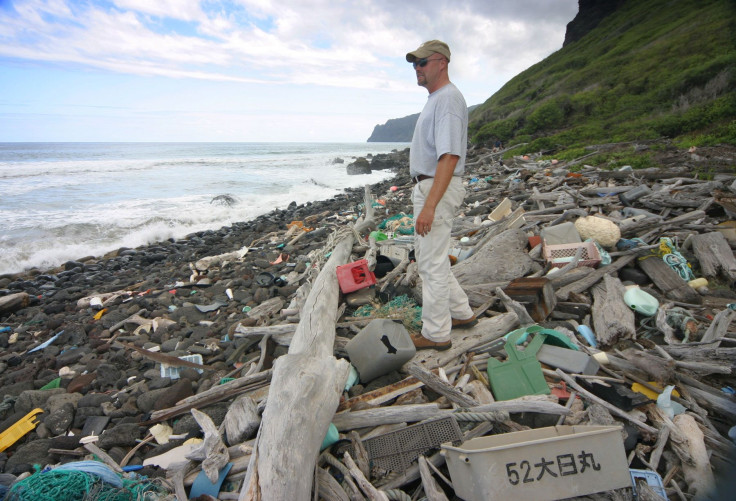Great Pacific Garbage Patch: Scientists Can't Find A Lot Of The Plastic They Know Is In The World's Oceans

Millions of tons of plastic products drift into the oceans every year, and yet nearly all of that garbage — 99 percent of it — can’t be found.
Researchers who spent months combing the waters for plastic particles say their nets came up surprisingly light, given that some 10 million to 20 million tons of plastic enter the ocean every year via rivers, floods, storm water runoff and from seafaring litterbugs.
“We can’t account for 99 percent of the plastic that we have in the ocean,” Carlos Duarte, an oceanographer at the University of Australia in Crawley, told Science Magazine.
Duarte led the Malaspina expedition, a global research project that studied all five major ocean gyres — large systems of rotating ocean currents — in 2010 and 2011. Plastic in the ocean doesn’t degrade but rather breaks down into tiny pieces. The ocean gyres pull the pieces in, forming industrial-era phenomena like the Great Pacific Garbage Patch.
Scientists estimated in the 1970s that about 0.1 percent of all plastic, about 45,000 tons, was washing into the ocean every year. But the world’s production of plastic has quintupled since then, and so the Malaspina team was expecting to find exponentially more debris. Instead, the researchers estimated that there are currently between 7,000 and 35,000 tons of ocean-dwelling plastic, Live Science reported.
What happened to all that plastic isn’t exactly clear.
Researchers hypothesized the plastic is being carried down into the deep ocean. That could be a good thing for wildlife such as seabirds, sea turtles and seals, which often confuse plastic objects like grocery bags, straws and soda bottles for food.
Or, it could be that small fish are breaking down floating plastic particles to even smaller pieces, making it easier for marine life to eat the debris. Duarte said that if fish are consuming the particles, “there is a potential for this plastic to enter the global ocean food web. And we are part of this food web,” he said in the Science Magazine interview.
The Malaspina findings were published on Monday in the journal Proceedings of the National Academy of Sciences. Several similar reports came out last week to sound the alarm on the environmental impacts of plastic on marine life. The United Nations Environment Programme said that plastic waste in the oceans is causing $13 billion in damage every year, and it projected that worldwide plastic production will reach 33 billion tons by 2050.
© Copyright IBTimes 2024. All rights reserved.




















